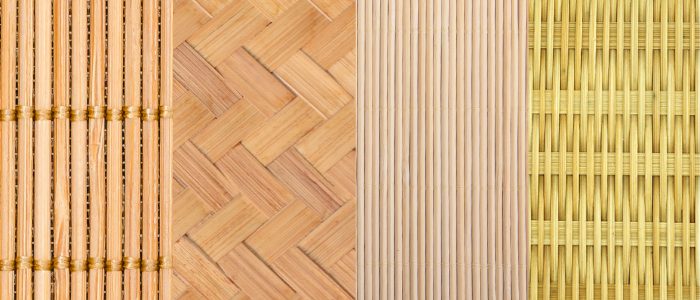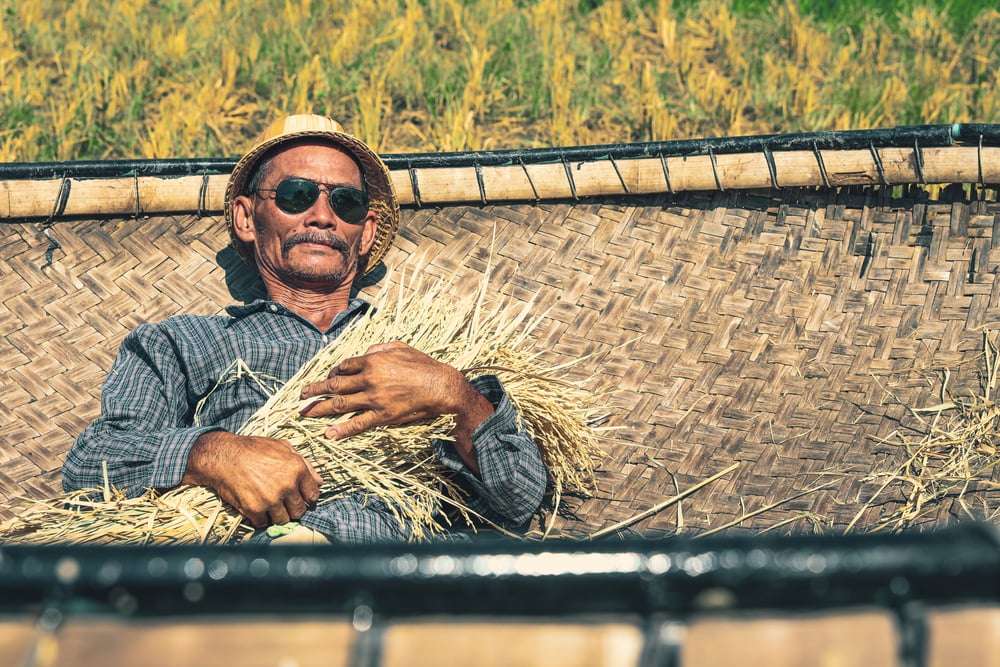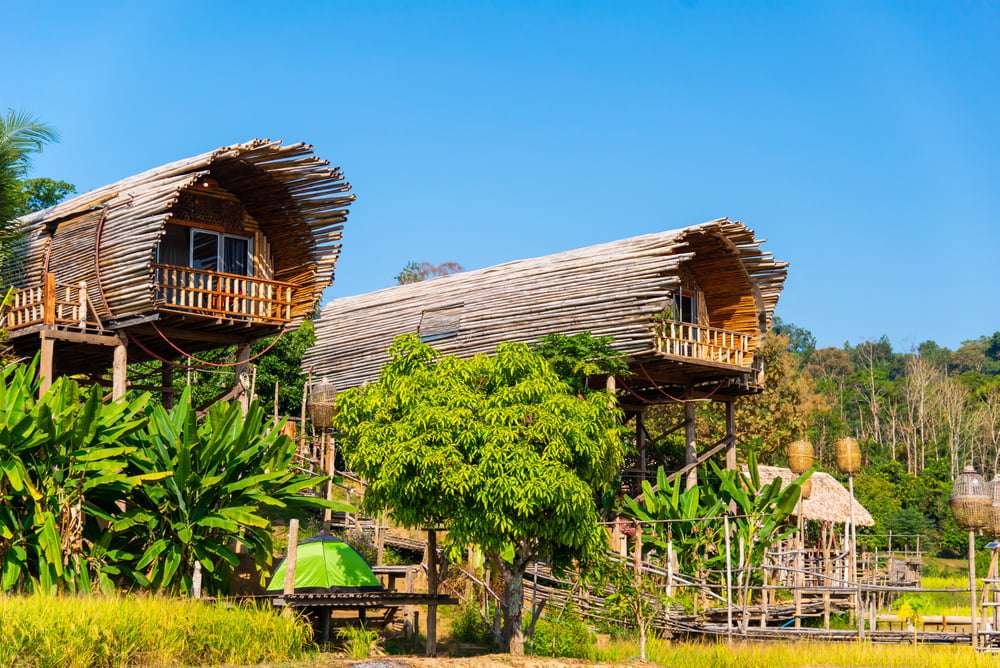2021 Ambient Scholarship Award-Winning Essay
Each year, Ambient Bamboo Floors is proud to provide financial assistance to a student enrolled in a two or four-year course of study at an accredited school in the U.S. This year’s winner is an undergraduate student at the University of Virginia. The 2021 winning essay appears below.
Quintessential Versatility: The Ecological Past, Present, and Future of Bamboo
Tre, uqalo, take, bambuk, nsungwi — the names for bamboo are just as diverse as its cultural and ecological applications from the dawn of man until the present day. The stout, well-rounded, Eastern-Asian plant has made itself handy for a myriad of situations, applications, and uses all around the world. The prerequisite, natural features of bamboo are characteristics that must be explored in order to understand how a plant that has served for so long as a material constant can have a long lasting future. This paper will delve into the characteristics of bamboo, the ecological progress of bamboo throughout history, the role of bamboo as an environmental constant in the modern world, and the fluctuating and uncertain future of bamboo.
The Characteristics of Bamboo
Physically, bamboo is one of the most unorthodox plants on earth, with features that render it the perfect tool. Spanning 90 genera and over 1,200 species, the bamboo plant is best known for two distinguishing features: its extraordinary growth and its rugged ability to grow in various terrains and temperatures. Regarding the first feature, specific types of bamboo grow absurdly, even record-breakingly fast, at 35 inches per day, although the smallest species may peak at only a few centimeters.
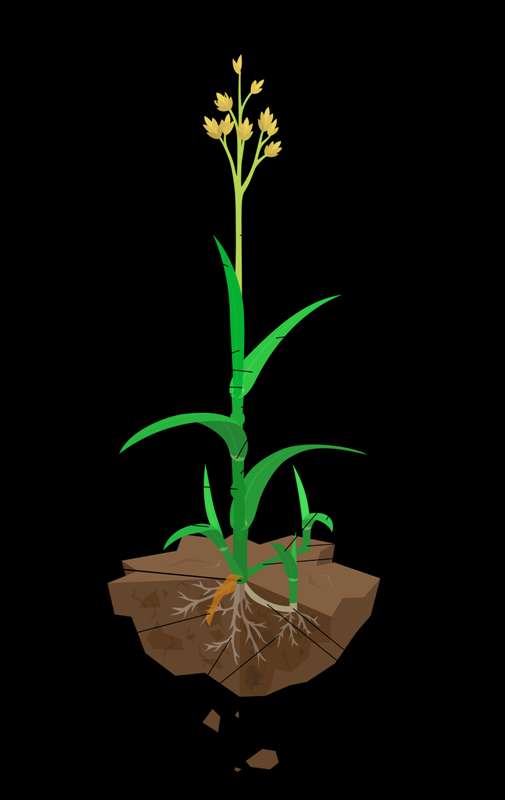
They can also grow tight in a circumvential pattern, typically creating noninvasive clusters found in tropical regions. Some species of the evergreen bamboo have even evolved to be deciduous, shedding its leaves annually. These features of bamboo have contributed to its rapid growth and spread, and consequently, it’s sustainability. Bamboo adapts to harsh and brutal conditions by being incredibly conservative of water, making it the ideal medium for building, writing, and manufacturing for societies all across the globe, not only in third world countries lacking industrial materials, but also in premium western products, such as clothing and flooring. The flexibility of the culm trumps all.
The Evolution and Development of Bamboo
The roots of the plant trace back far before the first humans evolved to inhabit the earth. The parent family of perennial forest-grass, known as poaceae, birthed bamboo around 35 million years ago — too late to fall prey to dinosaurs, yet too early for modern domestication — thus, the ancient bamboo remained a plant for herbivorous land mammals. It was finally utilized by man 4,500 years ago, during the Stone and Bronze age in China, as a flexible medium for building, repairing, and eating. Used to create arrowheads, musical instruments, carving tablets, pens, and finally paper from 265-316 AD, bamboo was inextricably attached to Chinese culture and life by the 10th century.
“Bamboo shoot for food, bamboo tile for house-making, bamboo hat for rain-sheltering, bamboo wood for fuel, bamboo skin for clothing, bamboo paper for writing and bamboo shoes for foot-wearing, that is the life – we can not do without bamboo.” – Su Shi, Scholar [Song Dynasty]
Of these, paper was the first to find itself in mass demand and production, thereby making it the first product to give bamboo a global impact. Described in a botany book in the 1600s, bamboo paper manufacturing entailed sorting and soaking raw materials, boiling, pounding, bleaching, picking up with a bamboo screen, pressing, and drying. In 1949, China’s production of this product was at a whopping 120,000 pounds annually, growing astronomically in the following years. This invention would only be the first of many products provided by bamboo, and until this day, bamboo paper is still manufactured and bought. The invention of bamboo paper directly led to increased efficiency in the transfer of knowledge and directions.
The well-rounded reputation of the plant is further exemplified on the culinary side. Bamboo shoots, termed “mang” in Vietnamese, serve as a popular, delicious ingredient — which in fashion with the culm’s practicality — is also very healthy for the consumer, being low in fat, high in fiber, and rich in mineral elements. These characteristics combine to fight against colon cancer and keep cholesterol levels low, while providing the body with the general supplements, such as amino acids and potassium, needed to maintain a healthy life. Not only is this useful to humans, but also to the famous pandas, bamboo lemurs, and gorillas, who all have an exclusive diet to the plant.
An Anchor in the Modern World
In the modern world, bamboo is grown for two reasons: capital and use. Regarding the former, the cash crop reputation of bamboo is not modern, exemplified in the aforementioned
paper industry. In recent decades, however, the idea of bamboo products have skyrocketed to such an extent that about 2.5 billion people now depend on the plant economically, and its yearly generated revenue amounts to some 2.5 billion USD. The enterprise has, however, shifted its dominant producer from China to India, with the subcontinental bamboo industry now spanning
about 17% of their total forestry, compared to 3% in China (although biodiversity still lies in the hands of the latter, who possess about 350 more species of bamboo).
Chinese farmers now also depend on bamboo for 30-40% of their income and are harvesting the plant in greater numbers than ever, partially as a result of the national ban on harvesting timber from natural forests. It has come to the point where bamboo is beginning to dominate markets where timber used to prosper, with numbers of harvested culms well over one billion. The dividends are incredible, with profit turnouts of about 10 billion and reaching an annual production value of about 13 billion in 2010.
This increase is not exclusive to Asia, with Latin America growing the crop in some 10 million hectares and Africa growing the crop in some 2.7 million hectares. Regarding use, the plant has, as expected, experienced a great increase of practical applications as the use of machinery becomes more accessible, allowing for increased manipulation of the plant. The applications of bamboo use can be divided into 2 classes: luxury goods and basic goods, with basic goods being the ones closely related to the ancient Chinese inventions, such as toothpicks, chopsticks, and building materials, earning bamboo the name “poor man’s timber”. Today, more than one billion people in the world live in traditional bamboo houses, a much cheaper alternative to wood, yet still durable and, surprisingly, earthquake resistant. The “poor man’s timber” has also been slowly alleviating the strain of poverty in many places across the world by offering cheaper
alternatives to so many daily items, earning it the status of “pillar of economy” in China’s more mountainous areas.
Luxury bamboo goods, on the other hand, are those invented recently for the modern household, including flooring and clothing. Flooring, in particular, is a staple for traditional bamboo houses, mainly seen in western homes as a clean, durable, and unique style of decoration. Bamboo flooring also serves to fight the forces of deforestation and the resulting climate change.
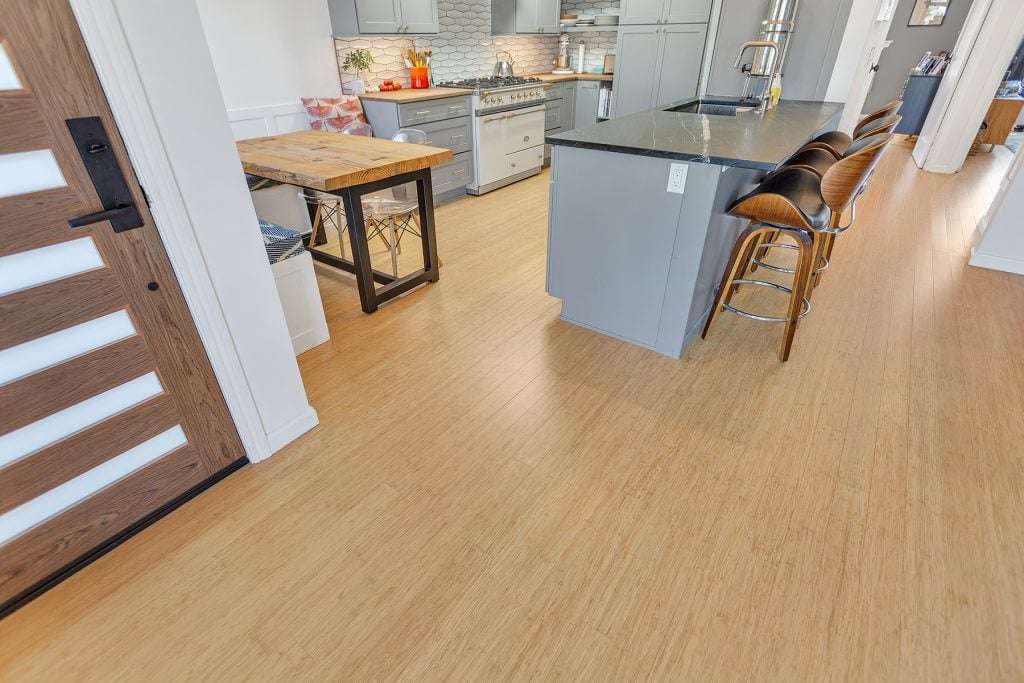
Similarly, bamboo clothing has many differing properties which make it stand out from normal clothing. Firstly, it is incredibly flexible, smooth on the skin, and lets the body breathe freely on hot days, prompting a great portion of commercial bamboo clothing to be sold by luxury beach or sportswear brands. Both of these markets have tremendous potential to grow, and as the world progresses, it could be hoped that the first branch of bamboo products will be phased out and replaced by a second, with even more innovative and sustainable products.
Untapped Potential
The plant has endless opportunities for expansion in the future, and among those, two of the top few that are now being largely realized are utilizing the natural building capabilities of the plant and distributing it to developing countries lacking first world construction capabilities and using its fast growing character in biofuel energy. In a small town near the Sudanese border, the people of Asosa — reeling from drought, deforestation, and environmental decline — have found a safe haven in the International Network for Bamboo and Rattan. The multinational organization has been providing technical support for the cultivation and utilization of this plant for towns just like Asosa across Ethiopia and Ghana.
View this post on Instagram
The bamboo plant has been a godsend for disaster-stricken villages, which use their durability to persevere through extreme shortages of water, growing and rejuvenating ages faster than any tree could ever dream of to ensure a sustained supply for years to come. The citizens of Asosa are also taught to make and sell bamboo products to make a living, including bamboo charcoal — a
substitute for wood charcoal and coal — and kindling, allowing them to profit on the economic benefits of this up-and-coming cash crop. Commenting on the necessity of African states to have
access to sustainable natural resources, Doctor Chin Ong stated, “You want firewood, you want to reduce erosion, to maintain the water supply, generate cash and employment. Bamboo comes
the closest — it gives you the most things.”
In the desolate landscapes of a climate-troubled country, such as Africa, bamboo once again came to the rescue, confirming its usefulness in the traditional sense, while also equipping those areas to prosper in a way that is also sustainable. As the plant is being used to help developing countries prosper in a harsh socio-environmental climate, it is also being used by more developed countries to usher in the latest age of renewable energy. High density variants of bamboo are being farmed by some industries to burn and boil, producing gas, which then works to “generate electricity, bio-ethanol and bio-CNG.”
View this post on Instagram
Such facilities have already arisen in six countries, including two in Africa. In turning to this “greener” method, industries have created a system that “can be sustainable, environmentally advantageous, economically sound and generates substantial local employment.” Surprisingly, it is even noted that the great energetic powers of bamboo had remained largely untapped, due to a “lack of awareness of its potential.” Although bamboo is not yet known as the plant of renewable energy, many activist groups have dedicated themselves to making it so, going to great lengths to clone acceptable culms and raising bamboo cultivation status in India to “energy plantation” in order to receive more government funding.
Bamboo: At the Forefront of a More Sustainable Future
With a storied history of being a constant cornucopia of resources and practicability, there is no reason why this progress should be stalled in the future. From fighting barren landscapes in Ethiopia, to battling the world’s fossil fuel problems by providing an eco-friendly alternative, the properties installed in bamboo from its thousands of years of evolution and refinement has placed it in the modern world as a crop of gold amongst a field of copper. The humble, subtropical culms provide the solution to many of the ecological problems faced by the world today, and by harnessing the full power of bamboo, human development will grow just as fast, if not faster.
Interested in the Ambient Scholarship? Plan now for next year’s scholarship. Applications and essays are due by September 1, 2022.

About the Author
Meet Bridgett, your friendly neighborhood green building guru! With more years of experience than she’d like to admit, Bridgett is your go-to expert for all things eco-friendly construction. She’s on a mission to make your home the envy of every tree hugger in town (and maybe even the squirrels 🐿️). Let’s build a greener, funnier, and all-around better world together – one enlightened eco-conscious choice at a time!


